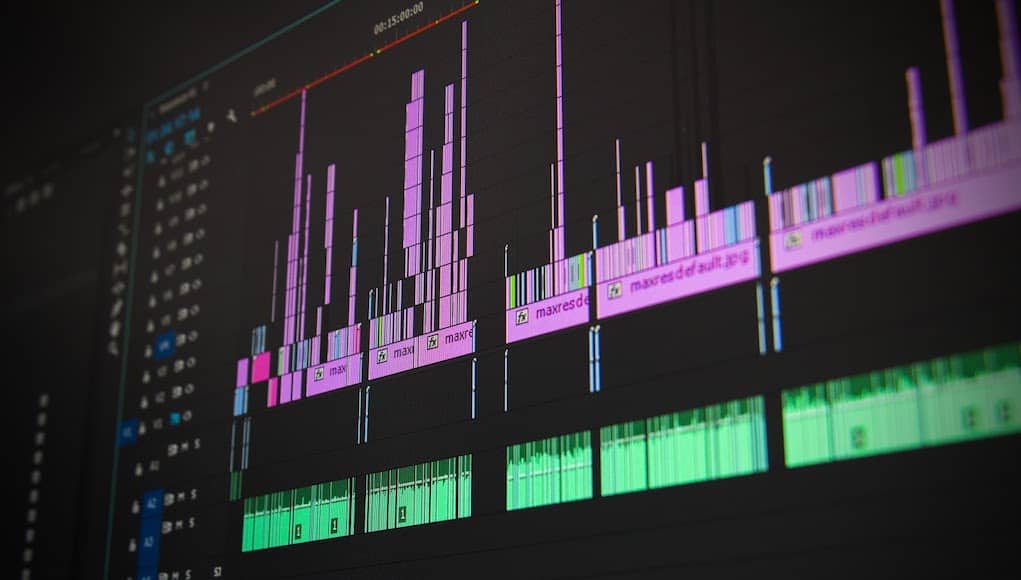How Machine Learning can Enhance Music Education

By Daniel Browning
With the rapid evolution of technology, new tools for creativity and development are constantly emerging. Musicians today are beginning to use machine learning, where computers “learn” over time by being fed large amounts of data, to create music in new and innovative ways. The computers process this data and identify patterns, allowing them to act on future data. After identifying these patterns, computers can classify new information, make predictions, or even generate novel, creative content. In the world of music, the possible applications of this technology are endless.
In music education, machine learning techniques can supplement numerous parts of the curriculum such as musical performance, composition, theory, and production. Incorporating machine learning into music education can enrich the learning process and add new layers to already engaging courses. While applications of machine learning have untapped potential, there are numerous techniques that can be adopted in the classroom today:
1. Live feedback on musical performance
Because students typically greatly outnumber their teachers, students can only receive a limited amount of feedback regarding their musical performance. When practicing outside of classes, students typically receive no external feedback at all. This lack of feedback can be especially challenging in the early stages of learning to sing or play an instrument. Students may not recognize that they are hitting a wrong note or missing a rhythm. Using machine learning, students can receive live feedback on their performance and can learn which sections of music they need to focus on practicing. This feedback can be a useful supplement to in-class instruction and can provide students with the resources needed to practice effectively.
SmartMusic is one program that provides instant feedback to students as they practice, informing students of pitches or rhythms that they miss. Because it was specifically designed for classroom use, students can send their best performance of a piece of music to the teacher for additional feedback. The program itself contains a large library of music, but teachers are also able to import their own music for custom assignments. Kadenze, a provider of massive-open online courses, focusing on creative fields, offers music courses that provide machine-learning based feedback on student assignments. Researchers, examining the overlap between machine learning and music education, have also proposed software that would compare a student’s musical performance to that of famous musicians, although this has yet to be developed.
2. Musical composition and improvisation
Although music composition is a creative process, a number of companies have created machine learning-based software to supplement the artistic experience. Popgun, for example, is a start-up developing a machine learning approach to creating original pop songs, set to be released later in 2018. Amper, alternatively, boasts the ability to compose unique music for any content needs, according to the user’s specified mood, style, and length; Aiva Technologies composes soundtrack music specifically designed to fulfill storytelling needs. Perhaps the most easy to incorporate into the classroom is Magenta, a research project initially started by the Google research team that also focuses on using machine learning to create music. Magenta provides a variety of open-source demos that involve interacting with music in creative ways. This does not begin to scratch the surface of an exhaustive list of currently-available music-generation software, and more is in development even now.
The use of machine learning to generate music opens up a new world of opportunities for teaching in music education. It can give students the opportunity to tweak computer-generated compositions to create innovative, creative music at the intersection of music and technology. Working to change and improve music that has already been “composed” can also pose an exciting challenge to students, and working with computer-generated music provides an entirely new angle from which to learn.
These computer-generated compositions can also provide students with a field of new music to perform and improvise with. As most of these tracks are generated in audio form, students have the opportunity to practice with new recordings or even improvise with music as it’s being created.
3. Music theory and analysis
Although currently a less common application of machine learning, there are interesting possibilities that could arise from applying these methods to learning music theory. When learning music theory, students are frequently limited by their ability to apply the rules that they are taught to new pieces of music, based on limited examples. However, because machine learning techniques are designed specifically to recognize patterns, they are ideal for analyzing compositions. A program designed to analyze music can give students access to a huge amount of examples to learn from, making it much easier for students to learn the nuances of the rules. A similar program can be used to check student compositions for music theory errors, not unlike spelling and grammar check in a word processing document.
Machine learning-based software can also be used to analyze music across time periods or genres. This can provide interesting insight into how music varies and how it stays the same. In a classroom, it is common to listen to various styles of music and identify the differences between them. Machine-learning software can easily supplement this technique and provide additional insight into how music varies and how it stays the same.
4. Recording, mixing, and production
Digital Audio Workstations (DAWS), software used to record, mix, and produce audio, are used in most schools with music production courses. While these programs generally rely on audio signal processing rather than machine learning, machine learning can easily be incorporated into sound processing. Because machine learning can be used to identify specific sounds, it can be used for noise cancellation or to separate sounds into different tracks. It can also be used to identify specific voices or instruments and to change the timbre of pitch of only a specific sound. Techniques like this can provide students more ways to develop music in innovative ways. Start-ups like LANDR, have also developed ways to automate the mixing and mastering process, which can also help students learn how to improve the sound of their music.
Incorporating machine learning techniques into music education can enhance learning and provide students with a richer, more personalized experience. As machine learning is a rapidly developing field, it is worth keeping an eye out for new possibilities as they emerge.
For more, see:
- Ask About AI: The Future of Learning and Work
- JFF Horizons: Building New Bridges to the Future of Work and Learning
- The Future of Learner Experience (LX)
Daniel Browning is a staff writer for DO Supply Inc.
Stay in-the-know with all things EdTech and innovations in learning by signing up to receive our weekly newsletter, Smart Update.




0 Comments
Leave a Comment
Your email address will not be published. All fields are required.